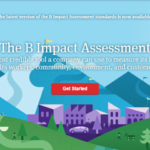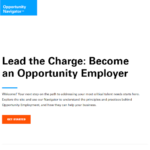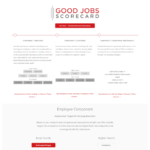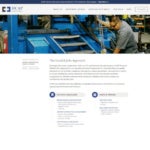Originally posted: May 11, 2020
Last updated: September 21, 2023
Once you decide to focus on job quality in your work, how do you know where to start? How can you measure existing job quality in an organization or a place? The diagnostic tools below help practitioners assess job quality in their own organization or that of a business partner and benchmark findings against local or national norms. Some of these tools are surveys that compare a business’ talent management practices to national standards and recommend which practice changes to prioritize. Others are rating tools that use business data to measure a firm’s performance against regional standards. Another tool offers guidance for analyzing local labor market conditions with a job quality lens.
As you explore these tools, you will see that some tangible attributes of job quality – like wages and benefits – are easier to quantify, measure and track than other attributes — such as workplace culture or quality of supervision. Using multiple tools together (such as a data-driven benchmarking tool and an employee engagement survey) can provide a fuller picture of job quality. As you begin to examine job quality in a region or an organization, you’ll also want to disaggregate data and analyze disparities in job quality across race, gender, and place to inform an equity-centered approach.
↓ Tools and Resources Below the Box ↓
Library Navigation
- Job Quality Tools Library Homepage
- About This Library
- Special: COVID-19 Response Tools and Resources
- Index of Tools by Field
Assessment and Benchmarking Tools

BLab – The B Impact Assessment
Who’s It For: Employers, Economic Development, Investing and Lending, Worker Advocacy, Workforce Development
What’s It For: This detailed assessment is a tool to help employers generate a report about their social and environment impact, including impact on workers, and to benchmark against peer companies. It includes measures of job quality, including compensation, benefits, safety, and worker ownership. Practitioners who work with businesses could direct them to this tool or even walk them through it.

Family Friendly New Mexico – Application for Family Friendly Business Award®
Who’s It For: Employers, Workforce Development, Worker Advocacy
What’s It For: This PDF Application for the Family Friendly Business Award® provides a helpful model for assessing business practices. Employers are asked questions about the quality of their jobs through factors such as diversity, benefits (e.g., paid leave), health supports, and flexible scheduling supports. Although some questions are specific to New Mexico’s policies, this application may be used as a model for organizations interested in assessing job quality for current and potential employer partners. This tool could also be used internally for employers who would like to assess their own practices. After scrolling down the webpage linked above, you may click to view the PDF Application for the Family Friendly Business Award.

FSG Talent Rewire Initiative and Grads of Life – Opportunity Navigator
Who’s It For: Employers, Economic Development, Investing and Lending, Worker Advocacy, Workforce Development
What’s It For: This assessment is a tool to help employers (primarily >150 employees) benchmark their talent management strategies against those other employers are undertaking and to determine where to focus practice change efforts. The topics covered in the survey include recruiting, hiring, retention, advancement, and more. A separate resource section also provides a variety of business-facing tools. Practitioners who work with businesses could direct them to this tool and even walk them through it.

Good Jobs Institute – Good Jobs Scorecard
Who’s It For: Employers, Economic Development, Investing and Lending, Workforce Development
What’s It For: The Good Jobs Institute created this scorecard to assess how well a business is delivering value to customers, employees, and investors. The employee scorecard measures performance across 9 “essential elements” of a quality job (see the framework included in Section 1). Employers and their partners can use this scorecard to build the case for practice change and set targets and track progress towards goals.

HCAP Partners – Gainful Jobs Approach
Who’s It For: Employers, Economic Development, Investing and Lending, Policy, Worker Advocacy, Workforce Development
What’s It For: HCAP Partners – a fund providing debt and equity growth capital to lower-middle market companies – has developed this operational impact approach to assess job quality standards and improvements in portfolio companies through a quantitative measurement system. HCAP has identified five key attributes of job quality that fall within the categories of economic opportunity and health and wellness. HCAP engages with businesses to collect data, develop a baseline assessment, and build a strategic roadmap to implement and improve workplace initiatives for creating and maintaining high quality jobs. While this bespoke measurement system is designed to meet HCAP’s needs, other investors, lenders, and practitioners who work with businesses to improve job quality may find HCAP’s job quality definition and measurement framework useful in developing their own tools.
Labor Market Research Tools

Reimagine Retail Chicagoland – Reimagining Employer Engagement: A Toolkit for Providers
Who’s It For: Workforce Development
What’s It For: Workforce development practitioners can use this how-to guide to build capacity to strengthen relationships with employers. Turn to page 8 for instructions on finding and using local labor market information to help jobseekers make educated job decisions and to inform employer engagement, and relevant programming. While the guide is designed for workforce professionals in the Chicago area, many of the listed resources are national or have equivalents in other regions.